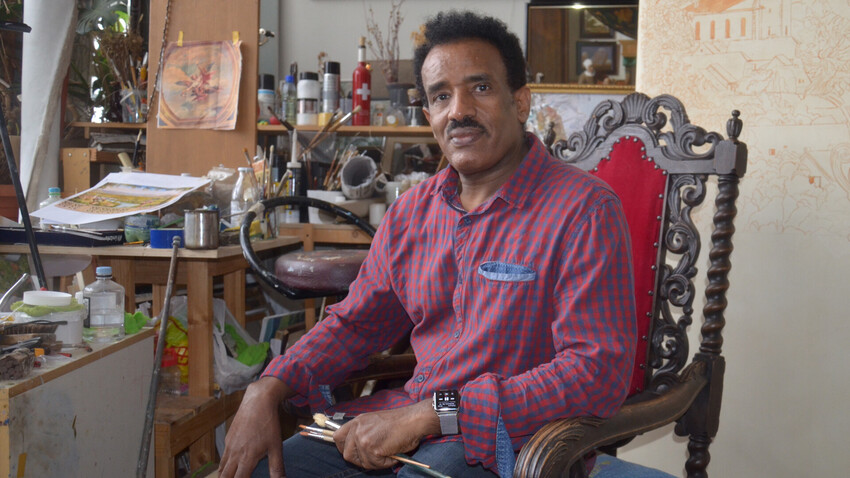
Ethiopian-born Tesfaye Atsbeha Negga has been living in St. Petersburg since 1990. He is a renowned artist and his works can be found in private collections around the world. He even took part in the interior decoration of the Cathedral of Christ the Savior in Moscow.
Over a period of more than thirty years Tesfaye's life has conclusively and irrevocably become intertwined with the city of St. Petersburg. He married a Russian artist, the daughter of a well-known artist and restorer, Yaroslav Shkandry, to whom Tesfaye owes many of the happy events in his life.
Today, Tesfaye himself gives students a start in life as a senior lecturer at the Department of Painting and Drawing of the St. Petersburg State University of Technology and Design.
Tesfaye was born and grew up in Addis Ababa, the capital of Ethiopia. His mother brought up the children (there were seven of them in the family) and his father worked as a builder, but he was very creative. He was always drawing up plans for future buildings, coming up with different designs. "I used to study them, found them an inspiration and over time slowly I started drawing myself," says the artist.
"In Russia, people know little about Ethiopia, but this Orthodox Christian country was one of the first in the world to adopt Christianity," says Tesfaye. Moreover, it is the only African country that was never a European colony. But Russians certainly know that their country’s most important poet, Alexander Pushkin, had Ethiopian roots.
"People in Ethiopia are proud of this kinship: They erect monuments to Pushkin, translate his verse and teach him at school," Tesfaye points out. "But because I know Russian, I can authoritatively say that it is impossible to translate Pushkin's verse. Yes, you'll convey the meaning but the brilliance and uniqueness of his rhymes - you can only appreciate them in the original."
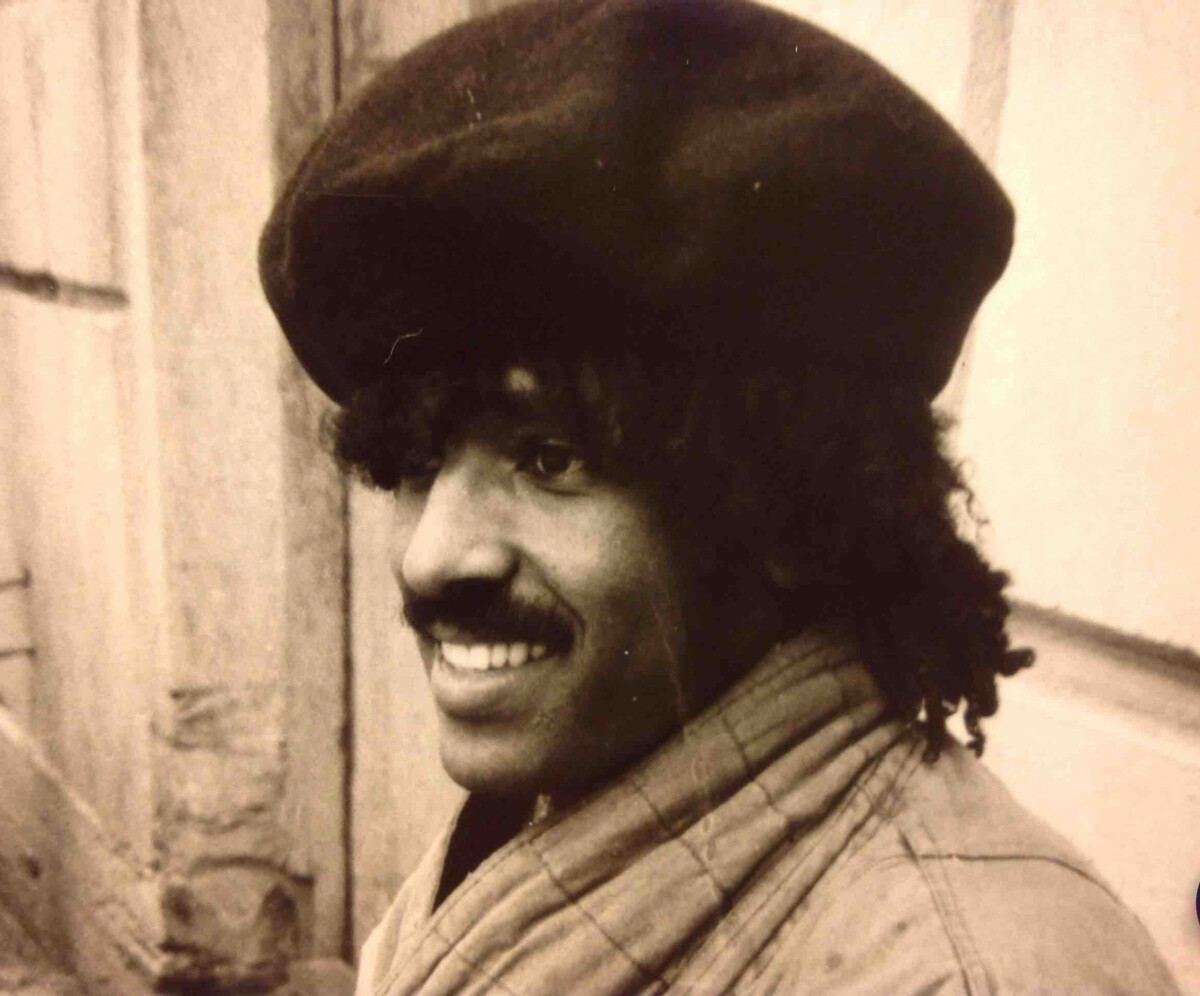
Tesfaye as a student in Soviet Leningrad (now St. Petersburg)
Personal archiveIn 1974, when Tesfaye was only four years old, there was a revolution in Ethiopia and the Emperor was overthrown. After that, the east African country developed very good relations with the Soviet Union.
"Nowadays, it is common to criticize the USSR, but for us it was a wonderful and kind country! It brought us ballet, exhibitions and movies, and all for free. The Soviet Union built us hydroelectric power plants and roads, and helped us in every possible way and, most importantly, invited Ethiopians to study in the USSR," Tesfaye recalls.
Graduating from art school in his homeland, as a high-achieving student the young Tesfaye received the right to continue his education abroad. Having successfully passed the selection process, in 1990 he went to Leningrad to study at the Ilya Repin Art Institute (now Academy of Arts).
"I, who grew up among sand, sunshine and low-rise buildings, needed a long time to get used to St. Petersburg's architecture and the northern climate. At first, I walked around on foot a lot and then I bought a bicycle," says Tesfaye. In good weather he still gets around the city on two wheels.
Back home, people had tried to scare him about the harsh Russian winter. His sister used to say: "Put your hand in the fridge and keep it there for five minutes. Well? And that's plus four degrees, but in Russia it's minus thirty! How are you going to live there?" But Tesfaye was undaunted: People manage somehow…
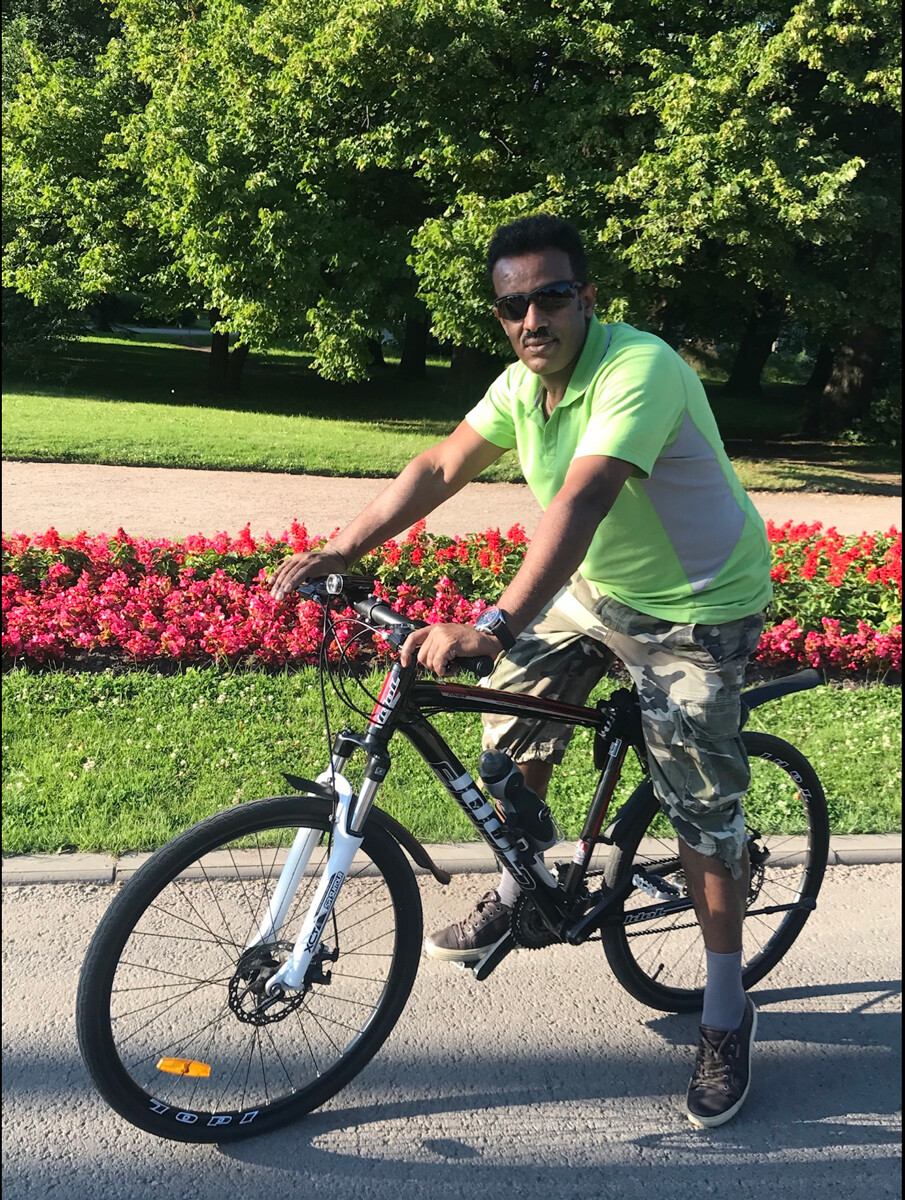
Tesfaye riding his bike
Personal archive"I had a Russian friend who liked to tease me. During my first year here he constantly said to me: 'Tesfaye, this year they promise such cold weather that it will be the end of you!' As you can see, 33 years have passed and I'm still around," the artist jokes.
The brave Ethiopian even likes to douse himself with cold water, and at Epiphany in January he immerses himself in the icy Neva. "It feels wonderful - like being born again!"
Tesfaye's Russian teacher frequently told her students to go out and converse with Russians instead of having lessons in class: "The weather's fine today: Go out into the street and talk to people. There's no better lesson than face-to-face contact!"
It was the 1990s, Russia was only just opening up, and everyone found foreigners very interesting, so people were happy to reach out and socialize.
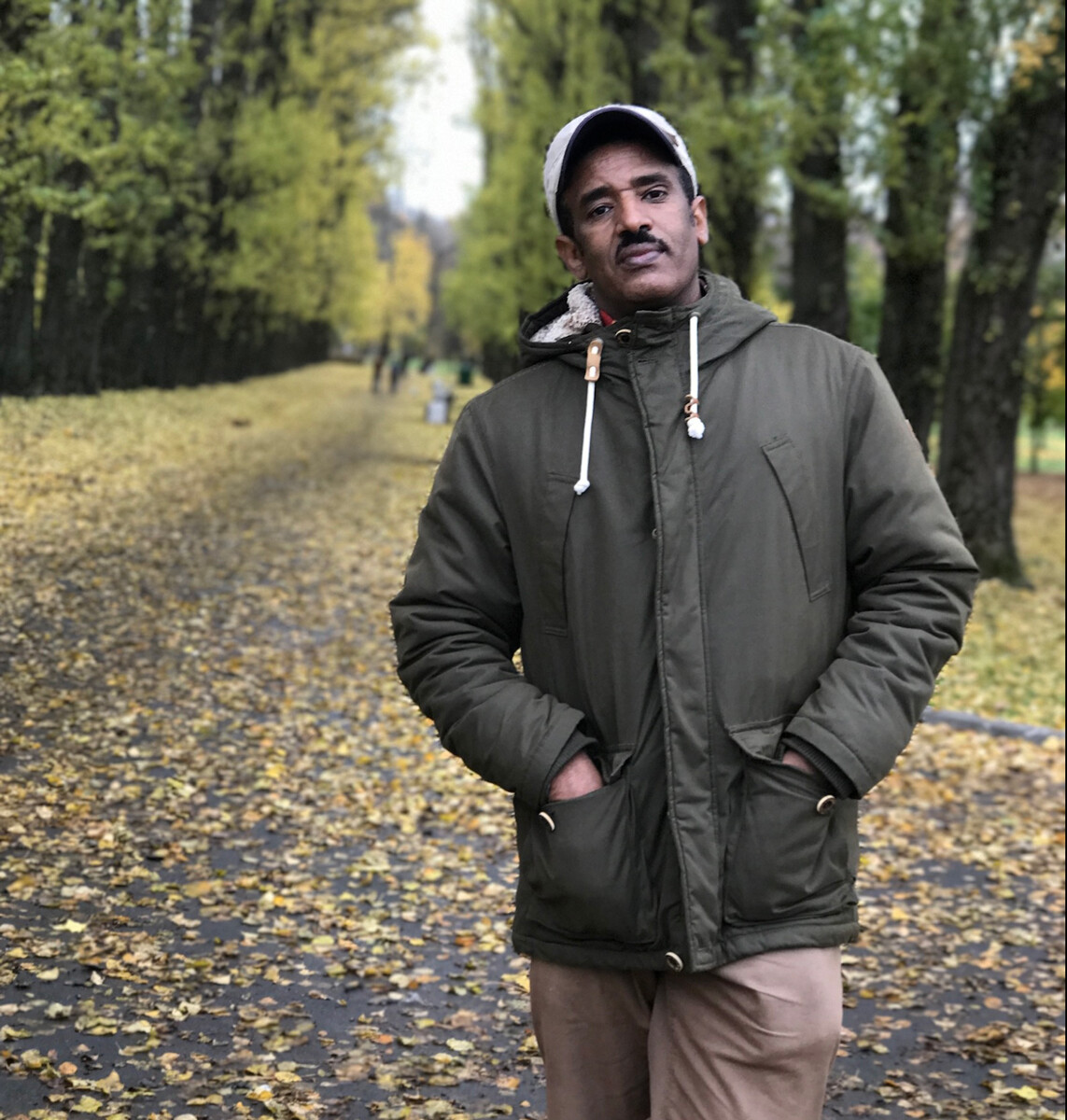
Tesfaye now feels more Russian than Ethiopian
Personal archive"This is what often happened back then. We'd make acquaintances with people, chat for a bit, and then I ended up being invited somewhere. At first, it was because I was a foreigner, but then people could see that I'm a fan of Russian literature and culture and am passionate about a lot of things - and we genuinely began to find one another's company interesting. I still have friends in St. Petersburg whom I first met in that period."
He also used to invite guests to his place. "I used to get special flavorings for tea: cinnamon, ginseng, herbs and roots. The entire residence hall and my acquaintances from town would come over for African tea drinking sessions."
Tesfaye admits that thanks to his Russian friends he was able to start earning money and traveling.
One day, Tesfaye made the acquaintance of Misha, who was then a student at the seminary. They subsequently became the best of friends. "His mother loved to cook and was very good at it. Salads, soups, and apple cake - they were all perfect, and it was how I grew fond of Russian food, and Russian parties. We used to sing during those gatherings. The songs were unfamiliar to me, but I was very much captivated by it all!"
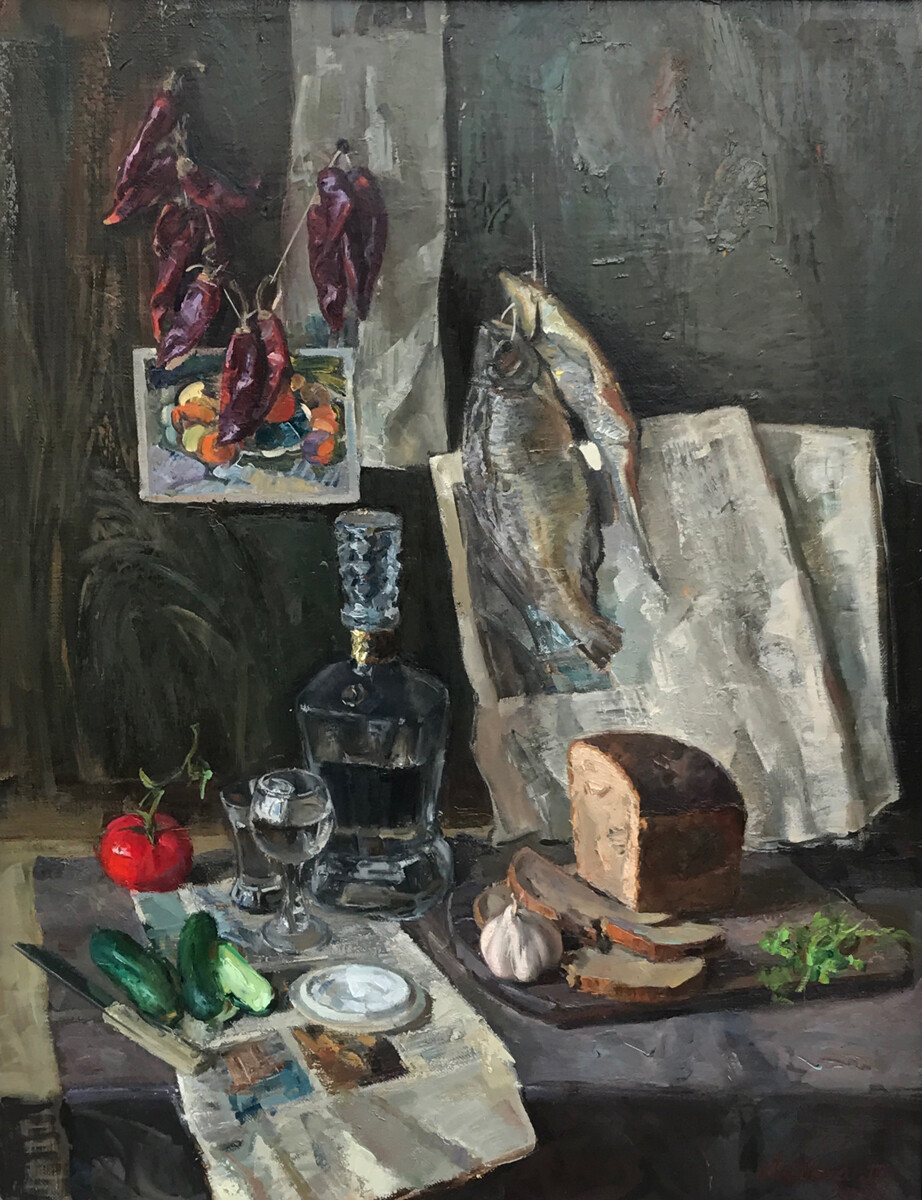
Still with salt-dried 'vobla'
Personal archiveThanks to his friend Misha, Tesfaye first had the chance to travel to Switzerland in 1995 - students of the seminary were invited to Geneva for a seminar, and Misha insisted that his artist friend should enter a competition to go on the trip. Tesfaye painted a series of works on religious subjects, and they were accepted. In Switzerland they were exhibited at a gallery, and all 12 paintings sold on the first day.
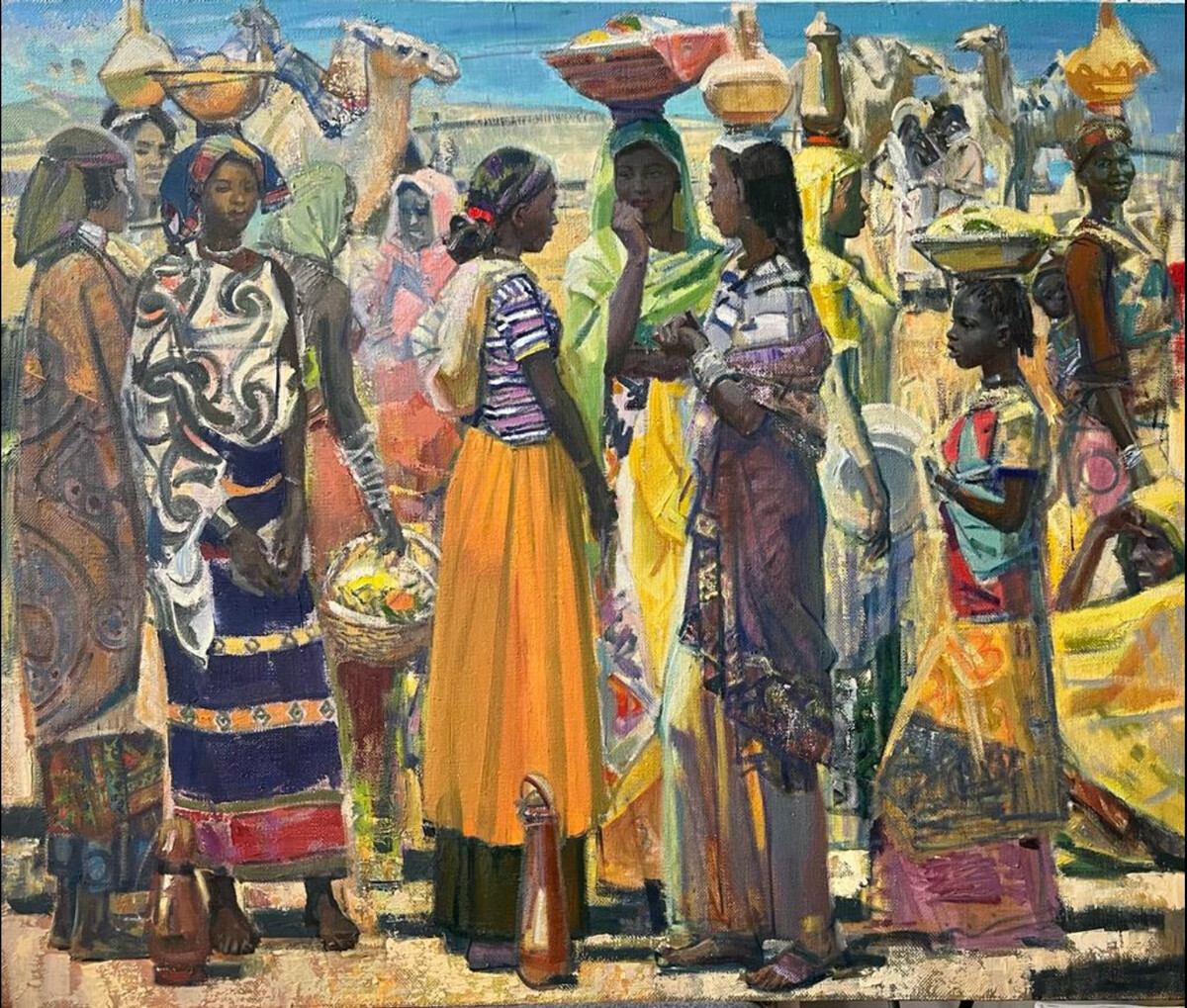
Black women
Personal archiveThis was how Tesfaye made money for the first time and also met a gallery owner who was subsequently to sell his paintings on African subjects for many years. As a young student, he parted with his paintings for small sums of money, and the gallery owner charged a sizable mark-up. "My work was mainly purchased by rich Russians. I traveled there a lot and saw these people for myself, and once I even bumped into Anatoly Sobchak, the first mayor of St. Petersburg. He asked in English: "Why are your things so expensive?" In those days paintings in Russia cost kopecks. I greeted him in Russian: "How are you, Anatoly Alexandrovich?" He became anxious. An African who speaks Russian recognized him! He discreetly left."
The father of his future wife, the artist Yaroslav Shkandry, taught Tesfaye painting techniques at the Repin Institute (today Academy of Arts). The teacher was very sociable and affable, and popular with all the students. His daughter Nadezhda used to come to the studio, and one day she saw Tesfaye's work and the signature "Atsbeha", and concluded that the artist was a girl since the name ended with an "a". She asked: "So who is this Atsbeha? I'd like to meet her."
Nadezhda went to the student hostel to meet the artist. "In those days I had dreadlocks, cool vinyls and a rakish-angle beret – it was impossible for her to resist me!" Tesfaye says, laughing. After a while they got together, and then they got married.
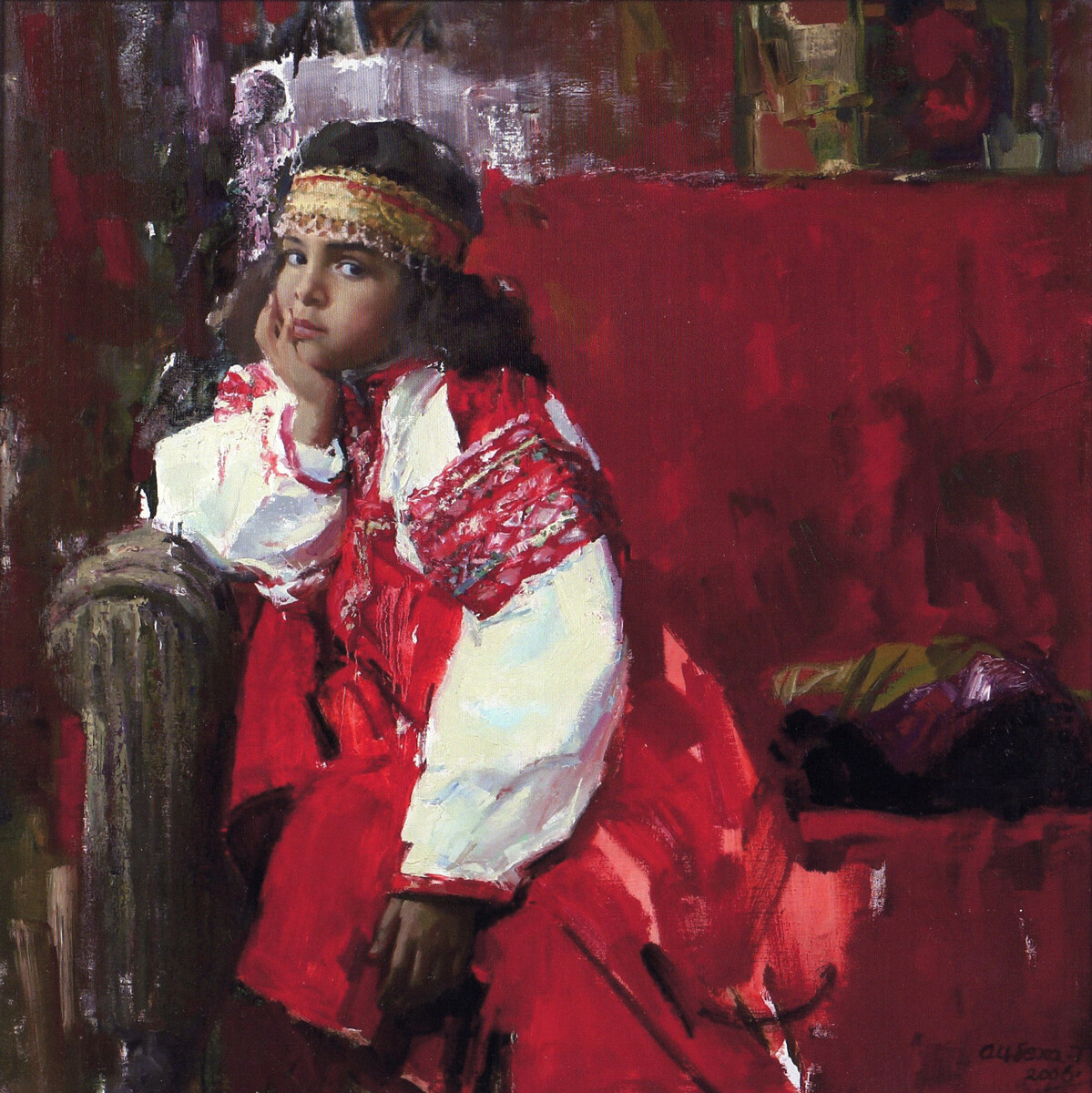
Portrait of a daughter
Personal archiveTesfaye remembers his student days as the most magical time. People from all over Russia and former Soviet republics were gathered together: young people from Yakutsk, Krasnodar, Odessa, and Minsk. "Everyone brought their culture with them, and it was one big mixture - a microcosm of the world, in which we lived, we made friends and fell in love. We'd go on painting expeditions to Pushkinskiye Gory. During the day we'd paint and sketch, and in the evenings we'd drink wine and recite poetry. At that time I was still an Ethiopian and there was much I didn't understand, but I was enchanted by the atmosphere."
Tesfaye admits that the world for him used to be reflected in an Ethiopian mirror, whereas now he sees it through a Russian mirror. His thoughts, his visual imagination- "everything belongs to here," and he adds that "I sometimes dream that I am talking to my parents and brothers in Russian, and they answer back in Russian. My 33 years in Russia have left their mark."
In the late 1990s, Moscow's Cathedral of Christ the Savior was being rebuilt after it had been demolished during the Soviet era. Tesfaye's father-in-law, who was working on the interior decoration, suggested that he enter his work for a competition to select the best designs.
Tesfaye recalls that he initially wanted to turn down the idea because his paintings were still selling quite well in Switzerland, and the gallery owner was asking for more and more of his works. Today, however, Tesfaye realizes how important the cathedral commission was for his career as an artist.

Working at the Cathedral of Christ the Savior
Personal archive"I did not know anything about the subject - how could I paint anything, I thought at first?" But his father-in-law gave him a pile of books and after reading them, Tesfaye painted 12 studies for the pilasters of the cathedral depicting scenes from the lives of the holy elders. In the end, the commissioning panel accepted all 12 sketches, but they ended up being painted by other artists. Tesfaye himself was entrusted with executing a large, 4 x 6-meter, painting, the “Seventh Ecumenical Council”. For this work, he was awarded a medal of honor from the Russian Academy of Arts.
A full version of this article was published in Russian in the Nation magazine.
Dear readers,
Our website and social media accounts are under threat of being restricted or banned, due to the current circumstances. So, to keep up with our latest content, simply do the following:
If using any of Russia Beyond's content, partly or in full, always provide an active hyperlink to the original material.
Subscribe
to our newsletter!
Get the week's best stories straight to your inbox